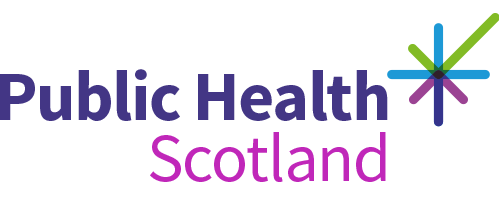Rapid Action Drug Alerts and Response (RADAR) quarterly report
October 2023
A Management Information Statistics publication for Scotland
- Published
- 24 October 2023
- Type
- Statistical report
- Author
- Public Health Scotland
Main points
- An increase in drug-related harms was observed in Scotland during summer 2023, compared with the previous reporting period (spring, reported in quarterly report 4 – July 2023):
- naloxone administration incidents: 26% increase
- emergency department attendances: 13% increase
- drug-related hospital admissions: 26% increase
- suspected drug deaths: stable
- Indicators of the use of drug-related services (injecting equipment provision and new drug treatment referrals) were broadly stable.
- Harms were reported across a range of community settings (including homelessness and temporary accommodation) and custodial settings (including prisons).
- Evidence from post-mortem toxicology, hospital toxicology and reports to RADAR, indicate that the pattern of drug use associated with most harms is polysubstance use involving benzodiazepines (including new substances such as bromazolam), stimulants and opioids.
- During this quarter, nitazenes (new synthetic opioids) have been detected in post-mortem and hospital toxicology samples. During the same period, other UK nations reported increased overdoses and deaths linked to synthetic opioids.
- More information on the emergence of new drugs can be found in our accompanying blog post 'New synthetic drugs on the RADAR'.
Alerts
- RADAR has two current alerts for new drugs that pose a high risk of overdose:
- A UK National Patient Safety Alert (external website) on synthetic opioids was also published.
Harm indicators
- Between June and August 2023, the average weekly number of Scottish Ambulance Service naloxone incidents increased (weekly average 89 and 95 respectively). The total number of incidents during this time period was 20% lower than the same period in 2021 and 22% higher than in 2022. These figures do not take account of naloxone administration by members of the public, service workers, or other emergency responders such as police officers.
- Between June and August 2023, drug-related attendances at emergency departments were 13% higher than the previous time period. The total number of attendances recorded in this period was similar to the same period in 2021 and 22% higher than in 2022.
- Between April and June 2023, drug-related hospital admissions were 26% higher than the previous time period. The total number of admissions was 28% lower than the same period in 2021 and 6% higher than in 2022. These data should be interpreted with caution, as the number of admissions may be affected by issues accessing urgent care and by the capacity of hospital services.
- Between June and August 2023, there were 307 suspected drug deaths. The number of deaths was similar to the same period in 2021 (317) and 7% higher compared to 2022 (286).
Toxicology indicators
- Between May and August 2023, in the ASSIST hospital toxicology pilot, the most frequently detected drugs were cocaine (11%), followed by bromazolam (10%) and temazepam (8%). Several new drugs, including protonitazene, metonitazene and xylazine were detected for the first time in the project.
- Between April and May 2023, the most frequently detected drug types in post-mortem toxicology testing were opioids (72%) and benzodiazepines (60%). The most common drugs detected were cocaine (37%), diazepam (37%), followed by methadone (35%) and heroin/morphine (33%). Bromazolam was detected in 23% of deaths. Nitazenes were detected in 1% of deaths.
- Between April and July 2023, prison drug analysis detected synthetic cannabinoids in 48% of samples. Benzodiazepines and steroids were the second most common drugs, both detected in 9% of samples.
Service indicators
- Between June and August 2023, the average weekly number of specialist drug-treatment referrals was stable. The number of referrals during this period was 6% lower than the same time period in 2021 and 14% higher than in 2022.
- Between April and June 2023, the average weekly number of injecting equipment provision transactions, and needles and syringes distributed increased. During this period, the total numbers of transactions, and needles and syringes distributed, were lower than in the same period in 2021 (12% and 7% respectively) and similar to 2022.
- Opioid substitution therapy prescribing data were not available for the latest time period.
Reporting trends
- Between July and September 2023, 36 trend reports were received by RADAR.
- The majority of reports related to benzodiazepines and polydrug use.
- In comparison to previous quarters, there was an increase in the percentage of reports related to overdose clusters, heroin and nitazenes.
Actions
- The harm caused by drugs is a significant public health issue for Scotland. The illicit drugs market is evolving and increasingly toxic substances are being detected with greater frequency.
- These developments increase the risk of harm and death, particularly in the context of polysubstance use, stigma and exclusion. They emphasise the importance of timely and accurate drug checking, hospital toxicology and forensic post-mortem toxicology services.
- A system-wide approach that prevents drug harms and supports people affected into treatment, care and recovery remains critical. Harm reduction interventions are a key part of a systems-wide approach.
- Immediate responses to localised increases in harms have been deployed at a local level. In addition to general awareness raising, these approaches included:
- Continued development of anticipatory care plans for people already in contact with treatment services, to identify and reduce risks associated with relapse or ongoing substance use (as part of MAT standard 3).
- Development of pathways to care, support and harm reduction for people in settings identified as high risk.
- Ensuring availability of naloxone and other appropriate harm reduction initiatives, such as wound care, assessment of injecting risk, dry blood-spot testing, in settings where high rates of harm have been reported.
- Review of harm reduction interventions and approaches to take into account the risks posed by the availability of synthetic opioids (for further information see the nitazene alert).
